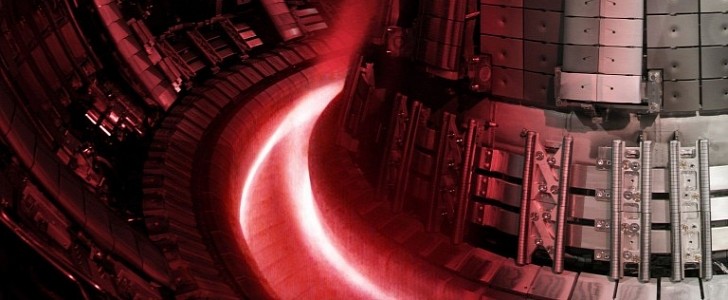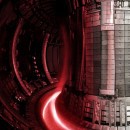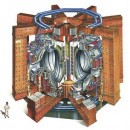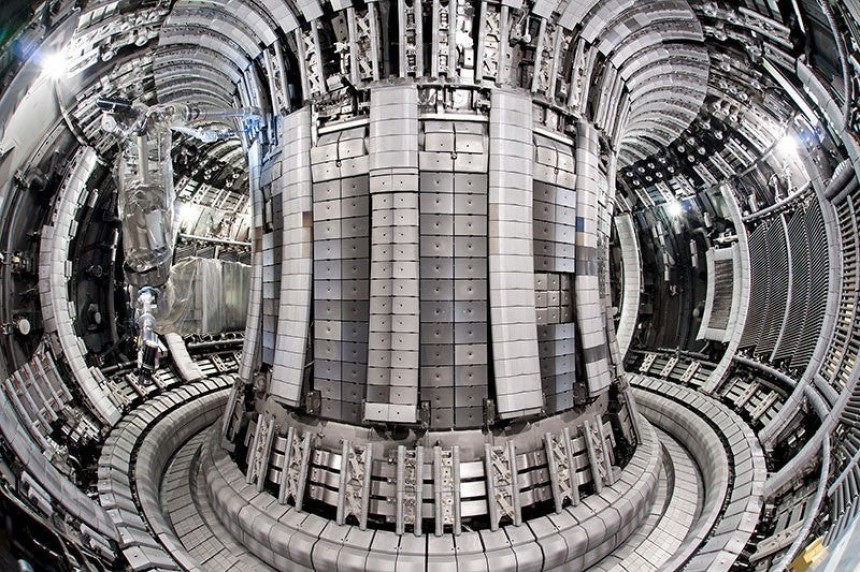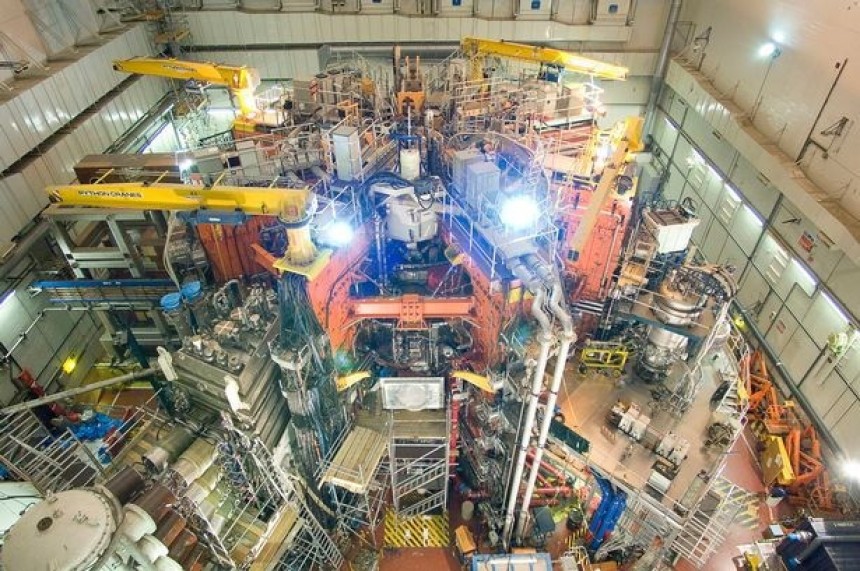No, folks, you didn't misread this headline. And no, it isn't clickbait. It may have only been able to power a few dozen microwave ovens at present, but the manner in which European scientists generated this power is nothing short of astonishing.
The UK-based Joint European Torus (JET) Laboratory in Oxfordshire has been at the forefront of nuclear fusion research and innovation since 1984. The first priority of JET, and its scientists, is reaching a nuclear fusion advancement stage known as scientific breakeven. Where in, an artificially generated nuclear fusion reaction, usually of hydrogen into helium, bears the same level of energy output as it does the production of radiant heat.
After experiments conducted in December of last year, personnel on-site have reason to suspect they're on the precipice of something genuinely history-changing. The origins of the JET project have roots stretching back to the 1960s. It was the result of decades of planning and cooperation between the United Kingdom and other European scientists in the pursuit of clean, efficient fusion power.
JET achieved its first plasma generation in June 1983, before being formally opened in April of the following year by Queen Elizabeth II.
Such was the enormity of the achievements the staff there wished to achieve.
Research at the institute has been slow but sure over the last four decades. Blood, sweat, and tears of unimaginable proportions have gone into every decimal towards scientific breakeven. Progress rates may have been painfully slow at times. But sure enough, the British laboratory had gathered some of the smartest minds in nuclear science in their ranks.
Further breakthroughs came in November 1991. When JET performed the world's first deuterium-tritium experiment, beating the American's equivalent attempt by machine by nearly 24 months. Until just a few short months ago, the absolute highest figure JET scientists were able to achieve was 16 MW of fusion energy while radiating 24 MW of thermal power to heat the fuel.
Enough to carry a couple of small homes or a couple of dozen microwaves unevenly heating a TV dinner all at once. This works out to a figure of Q=0.67, nearly three quarters to the target. We bet the green beans were still half-frozen in the middle, just for the added authentic touch.
Just before Christmas last year, JET scientists fired up their magnetically confined fusion reactor once again. This time, it managed to produce 59 megajoules of pure energy. The final data figures for the percentage to scientific breakeven are still being figured as of February 2022. But chances look promising that the results of the experiment will be a great leap forward.
Regardless of the numbers, the visible spectrum camera footage of long rings of superhot plasma will awe inspire us for many days to come. The bright ring of superheated material appeared like something out of your favorite sci-fi movie. So much so it has some of us cheesing out hardcore.
Be it the Death Star firing up planet-destroying laser cannon, the Borg Cube tractor beam, etc. It was a sustained jolt of fusion energy no longer than a few seconds. But it was long enough to make visuals that transcend hum-drum figures and data. Shiny objects have always been the key to humanity's collective heart, after all.
And to think it all could have never happened at all. But this scenario was all too possible during the immediate aftermath of the successful UK movement to formally separate from the European Union in nearly every official capacity outside of normal diplomacy.
There was genuine worry that the many German, French, Italian, Romanian, and other nationals working on the project would be in danger of being expelled from the country if dominoes fell in a particular direction. It was a fear that couldn't be entirely guaranteed to be invalid at certain points after the decisive split. It must have felt like the wheels were truly starting to come apart.
Happily, Prime Minister Theresa May and her government agreed to a contract extension to keep European scientists within the program until 2024. This motion was sustained by May's successor, Boris Johnson. The agreement's stood firm ever since.
What does this agreement prove to the world, exactly? Well, you could argue it proves even in times of great political peril, the advancement in science can and should be given a higher priority.
After experiments conducted in December of last year, personnel on-site have reason to suspect they're on the precipice of something genuinely history-changing. The origins of the JET project have roots stretching back to the 1960s. It was the result of decades of planning and cooperation between the United Kingdom and other European scientists in the pursuit of clean, efficient fusion power.
JET achieved its first plasma generation in June 1983, before being formally opened in April of the following year by Queen Elizabeth II.
Such was the enormity of the achievements the staff there wished to achieve.
Research at the institute has been slow but sure over the last four decades. Blood, sweat, and tears of unimaginable proportions have gone into every decimal towards scientific breakeven. Progress rates may have been painfully slow at times. But sure enough, the British laboratory had gathered some of the smartest minds in nuclear science in their ranks.
Further breakthroughs came in November 1991. When JET performed the world's first deuterium-tritium experiment, beating the American's equivalent attempt by machine by nearly 24 months. Until just a few short months ago, the absolute highest figure JET scientists were able to achieve was 16 MW of fusion energy while radiating 24 MW of thermal power to heat the fuel.
Enough to carry a couple of small homes or a couple of dozen microwaves unevenly heating a TV dinner all at once. This works out to a figure of Q=0.67, nearly three quarters to the target. We bet the green beans were still half-frozen in the middle, just for the added authentic touch.
Just before Christmas last year, JET scientists fired up their magnetically confined fusion reactor once again. This time, it managed to produce 59 megajoules of pure energy. The final data figures for the percentage to scientific breakeven are still being figured as of February 2022. But chances look promising that the results of the experiment will be a great leap forward.
Regardless of the numbers, the visible spectrum camera footage of long rings of superhot plasma will awe inspire us for many days to come. The bright ring of superheated material appeared like something out of your favorite sci-fi movie. So much so it has some of us cheesing out hardcore.
And to think it all could have never happened at all. But this scenario was all too possible during the immediate aftermath of the successful UK movement to formally separate from the European Union in nearly every official capacity outside of normal diplomacy.
There was genuine worry that the many German, French, Italian, Romanian, and other nationals working on the project would be in danger of being expelled from the country if dominoes fell in a particular direction. It was a fear that couldn't be entirely guaranteed to be invalid at certain points after the decisive split. It must have felt like the wheels were truly starting to come apart.
Happily, Prime Minister Theresa May and her government agreed to a contract extension to keep European scientists within the program until 2024. This motion was sustained by May's successor, Boris Johnson. The agreement's stood firm ever since.
